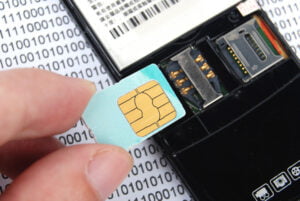Did you know that nearly 40% of smartphones will be equipped with eSIM technology by 2022? If you’re considering making the switch to eSIM cards, it’s crucial to ensure compatibility with your device and network.
This article presents 10 essential tips to help you navigate the world of eSIM cards and guarantee a seamless experience. From checking network compatibility to troubleshooting issues, these tips will empower you to make the most of this revolutionary technology.
Key Takeaways
- Checking device compatibility is crucial for ensuring eSIM card compatibility.
- Proper insertion of the eSIM card is important to avoid connectivity issues.
- Troubleshooting connectivity issues may be necessary to ensure the eSIM card works properly.
- Updating the eSIM card firmware can help resolve compatibility issues and ensure optimal performance.
Understanding Esim Technology
To better understand eSIM technology, you need to familiarize yourself with its key features and functionalities. eSIM, or embedded SIM, is a digital SIM card that’s built into a device rather than being a physical card that needs to be inserted. This eliminates the need for swapping physical SIM cards when changing networks or traveling internationally.
One of the main advantages of eSIM technology for international travelers is its flexibility. With a physical SIM card, you often have to purchase a new card or deal with roaming charges when traveling abroad. However, with eSIM, you can easily switch to a local network by downloading a new profile onto your device. This not only saves you money but also allows for a seamless transition between networks without the hassle of physically changing SIM cards.
Benefits of Using Esim Cards
Experience the convenience and freedom of using eSIM cards for seamless connectivity and effortless switching between networks. eSIM cards offer numerous advantages over traditional physical SIM cards. Here are some key features and benefits of eSIM technology:
| Features | Advantages |
|---|---|
| 1. Small Size | – Saves space in your device – No more dealing with physical cards |
| 2. Remote Provisioning | – Activate and switch networks without needing a physical card – Eliminates the need for manual SIM card replacements |
| 3. Multiple Profiles | – Use different profiles for personal and business purposes – Easy to switch between profiles on the same device |
With eSIM cards, you no longer have to worry about losing or damaging physical SIM cards. The small size of eSIM cards saves valuable space in your device, allowing for sleeker designs. Additionally, remote provisioning enables you to activate and switch networks effortlessly, eliminating the hassle of manual SIM card replacements. You can also enjoy the convenience of using multiple profiles on the same device, making it easier to separate personal and business usage. Embrace the advantages of eSIM technology and simplify your connectivity experience.
Compatible Devices for Esim Cards
You can use eSIM cards in a variety of compatible devices, such as smartphones, tablets, smartwatches, and laptops. These devices have built-in eSIM technology, allowing you to easily switch between different mobile networks without the need for physical SIM cards.
Here are four benefits of using eSIM cards for international travelers:
- Convenience: With an eSIM card, you can quickly activate a new mobile plan without having to visit a local store or wait for a physical SIM card to be delivered.
- Cost savings: eSIM cards often offer competitive pricing and flexible plans, allowing you to choose the best option for your needs and avoid expensive roaming charges.
- Flexibility: You can switch between different mobile networks and plans on the go, ensuring you always have the best coverage and service quality.
- Multi-device support: eSIM cards can be used across multiple devices, making it easy to stay connected no matter which device you’re using.
When comparing eSIM card plans and pricing, consider factors such as data allowances, network coverage, international roaming options, and customer support.
Checking Esim Card Network Compatibility
To ensure compatibility, you need to consider network coverage requirements and any restrictions specific to your Esim card.
Network coverage requirements refer to the availability and strength of the network signal in the areas where you plan to use your Esim card. It’s important to check if your Esim card supports the networks and frequencies used by your desired service provider to avoid any issues.
Additionally, some Esim cards may have restrictions on the types of devices they can be used with, so it’s crucial to verify compatibility before making a purchase.
Network Coverage Requirements
Before purchasing an eSIM card, make sure to check for network coverage compatibility in your area. It’s essential to consider the network speed requirements and international roaming options that the eSIM card offers. To ensure a smooth experience, here are some key factors to consider:
- Network Providers: Research the network providers that offer eSIM services in your area. Check if they’ve good coverage and reputation.
- Coverage Maps: Consult the coverage maps provided by the network providers. Look for areas where the signal strength might be weaker or where coverage may be limited.
- Speed Requirements: Consider your specific needs for network speed, such as if you require high-speed internet for streaming or video calls.
- Roaming Support: If you frequently travel internationally, check if the eSIM card supports roaming in the countries you visit.
Esim Card Restrictions
To ensure compatibility with your device and network, it is important to be aware of any restrictions that may apply to your eSIM card. These limitations can vary depending on the network provider and the device you are using. Resolving eSIM card conflicts requires understanding the specific requirements and restrictions associated with your eSIM card.
Here is a table outlining some common eSIM card restrictions:
| Restriction | Description | Resolution |
|---|---|---|
| Network Lock | eSIM card is locked to a specific network, preventing it from being used with other networks | Contact your network provider to unlock the eSIM card or use an unlocked device |
| Region Lock | eSIM card is restricted to work only in specific regions | Check the regional compatibility of your eSIM card and choose accordingly |
| Device Compatibility | Certain eSIM cards may only be compatible with specific device models | Ensure that your device is compatible with the eSIM card you are using |
| Activation Limit | Some eSIM cards have a limited number of activations | Check the activation limit of your eSIM card and choose accordingly |
Being aware of these restrictions will help you avoid compatibility issues and ensure a smooth eSIM card experience.
Activating Esim Cards With Service Providers
To activate your eSIM card with a service provider, you need to follow their specific activation process, which usually involves scanning a QR code or entering an activation code. If you encounter any issues during the activation process, troubleshooting steps such as restarting your device or contacting customer support can help resolve them.
Once your eSIM card is successfully activated, you can enjoy the benefits of eSIM technology, including the convenience of having multiple network profiles on a single device.
Provider Esim Activation Process
Make sure you follow the specific steps provided by your service provider to successfully activate your eSIM card. The provider eSIM activation process may vary depending on the service provider, but here are some common steps to expect:
- Visit your service provider’s website or contact their customer support for instructions on activating your eSIM card.
- Provide the necessary information, such as your eSIM card details, device details, and your account information.
- Follow the prompts to download and install the eSIM profile on your device.
- Once the profile is installed, restart your device and ensure that the eSIM is enabled in your device settings.
If you encounter any issues during the activation process, try the following troubleshooting steps:
- Verify that your device is compatible with eSIM technology.
- Ensure that you have a stable internet connection.
- Double-check the information you provided during activation for accuracy.
- Contact your service provider’s customer support for further assistance.
Following these steps will help you navigate the provider eSIM setup process and troubleshoot any activation issues that may arise.
Troubleshooting Esim Activation
If you experience difficulties activating your eSIM card with your service provider, try these troubleshooting steps.
First, ensure that your device supports eSIM technology and that it’s unlocked.
Next, check if your service provider supports eSIM activation and if they’ve any specific requirements or steps to follow.
If everything seems fine, try restarting your device and reactivating the eSIM.
If the problem persists, contact your service provider’s customer support for assistance. They may need to refresh your account or provide you with a new eSIM QR code. Remember to provide them with any error messages or details about the issue you’re facing.
Benefits of Esim
When activating eSIM cards with service providers, you can enjoy the benefits of seamless connectivity and the convenience of managing multiple phone numbers on a single device. Here are some key advantages of using eSIM over traditional physical SIM cards:
- Flexibility: With eSIM, you have the freedom to switch between different network operators without the need to physically change SIM cards. This gives you more options and control over your connectivity.
- Space-saving: Since eSIM is embedded within your device, you no longer need to worry about carrying and inserting physical SIM cards. This saves space and eliminates the risk of losing or damaging them.
- Global compatibility: eSIM adoption is rapidly increasing worldwide, making it easier for you to access local networks when traveling abroad. You can simply activate a local eSIM plan and enjoy local rates without the hassle of buying and installing a physical SIM card.
- Remote provisioning: eSIM allows for remote provisioning, meaning you can activate and manage your eSIM card directly from your device. This eliminates the need to visit a physical store and provides a more convenient and efficient process.
Transferring Data to Esim Cards
To efficiently transfer data to your eSIM card, regularly back up your device’s information. This ensures that you have a copy of your data in case of any issues during the transfer process. When transferring data to your eSIM card, it is important to follow the specific instructions provided by your device manufacturer or service provider. This will typically involve accessing the settings menu on your device, selecting the option to transfer or import data, and choosing the appropriate eSIM card as the destination. It is recommended to double-check that the transfer was successful by verifying that all the data, such as contacts, messages, and settings, have been transferred to the eSIM card. Refer to the table below for a visual representation of the steps involved in transferring data to an eSIM card.
| Steps to Transfer Data to eSIM Card |
|---|
| 1. Access device settings menu |
| 2. Select transfer or import data |
| 3. Choose eSIM card as destination |
| 4. Verify successful transfer |
Troubleshooting Esim Card Compatibility Issues
For resolving eSIM card compatibility issues, start by checking the compatibility of your device with the specific eSIM card you’re using. This can be done by referring to the device’s user manual or contacting the manufacturer’s support team.
If your device is compatible, but you’re still experiencing issues, here are some common troubleshooting steps to consider:
- Ensure that the eSIM card is properly inserted into the device’s SIM card slot.
- Restart your device to refresh the network connection and software settings.
- Check for any available software updates for your device that may address compatibility issues.
- If possible, try using the eSIM card on a different compatible device to determine if the issue is with the device or the card.
Updating Esim Card Firmware
To update the eSIM card firmware, you should follow the manufacturer’s instructions provided with the card.
Updating the eSIM card software is essential to ensure optimal performance and compatibility with your device.
Start by checking for any available firmware updates on the manufacturer’s website.
Download the latest firmware version and save it to your computer.
Connect your device to the computer using a USB cable or wirelessly, depending on the instructions provided.
Open the eSIM management software on your device and navigate to the firmware update section.
Follow the on-screen instructions to initiate the update process.
During the update, don’t disconnect the device or interrupt the process as it may cause damage.
Once the update is complete, restart your device and verify that the firmware has been successfully updated.
If you encounter any issues during the update process, refer to the troubleshooting guide provided by the manufacturer.
Managing Multiple Esim Profiles
If you have multiple eSIM profiles, you can easily manage them on your device. Here are some essential tips for managing and switching eSIM profiles:
- Convenience: Switching between eSIM profiles allows you to seamlessly switch between different carriers or plans, providing flexibility and convenience.
- Cost savings: By managing your eSIM profiles, you can take advantage of different pricing plans and promotions offered by various carriers, potentially saving you money.
- International travel: When traveling abroad, you can switch to a local eSIM profile to avoid high roaming charges and enjoy local data and calling rates.
- Backup and redundancy: Managing multiple eSIM profiles enables you to have a backup option in case one eSIM profile becomes unavailable or encounters issues.
Future of Esim Technology
With advancements in technology and increasing adoption by mobile carriers, eSIM technology is transforming the way we connect and manage our devices. The future of eSIM technology holds great promise, but it also presents unique challenges in adoption. Let’s take a closer look at what lies ahead.
| Future of eSIM Technology | Challenges in eSIM Adoption |
|---|---|
| Enhanced Connectivity | Lack of Standardization |
| Seamless Device Switching | Limited Device Compatibility |
| Improved Security | Network Operator Resistance |
| IoT Revolution | Consumer Education and Awareness |
The future of eSIM technology is expected to bring enhanced connectivity, allowing devices to seamlessly switch between networks. This will enable users to stay connected no matter where they are. Additionally, eSIMs offer improved security features, protecting user data and preventing unauthorized access. Furthermore, the rise of the Internet of Things (IoT) will heavily rely on eSIM technology, enabling a multitude of devices to communicate and operate efficiently.
However, challenges in eSIM adoption still exist. The lack of standardization poses hurdles for manufacturers and mobile carriers, leading to compatibility issues. Limited device compatibility also hinders widespread adoption, as not all devices are equipped with eSIM capabilities. Moreover, some network operators may resist the shift to eSIMs, as it may disrupt their current business models. Lastly, consumer education and awareness regarding the benefits and usage of eSIMs need to be improved to drive wider adoption.
Frequently Asked Questions
Can I Use an Esim Card With Any Smartphone?
Yes, you can use an eSIM card with any smartphone. The benefits of using an eSIM card include easy activation, flexibility to switch carriers, and no need for a physical SIM card. It works by digitally storing network credentials on the device.
How Do I Know if My Current Phone Is Compatible With Esim Technology?
To determine if your current phone is compatible with eSIM technology, check if it supports eSIM activation and the benefits it offers. Follow the steps provided by your carrier to activate the eSIM card on your device.
Can I Switch Between Different Service Providers With an Esim Card?
Yes, you can easily switch between different service providers with an esim card. The benefits are convenience and flexibility, allowing you to choose the best service provider for your needs without the hassle of physical sim cards.
What Are the Potential Drawbacks or Limitations of Using Esim Cards?
Using an eSIM card may present some disadvantages and challenges. It is important to be aware of potential limitations such as limited carrier compatibility and possible difficulties in switching service providers.
How Do I Transfer My Existing Mobile Plan to an Esim Card?
To transfer your existing mobile plan to an eSIM card, ensure compatibility by checking with your mobile carrier. They will guide you through the process, which may involve scanning a QR code or entering a confirmation number.
Conclusion
In conclusion, ensuring esim card compatibility is crucial for a seamless user experience.
One interesting statistic to note is that by 2025, it’s estimated that over 2 billion devices will be equipped with esim technology, indicating the rapid growth and adoption of this innovative solution.
By following the essential tips discussed in this article, users can confidently navigate the world of esim cards and enjoy the many benefits they offer.




